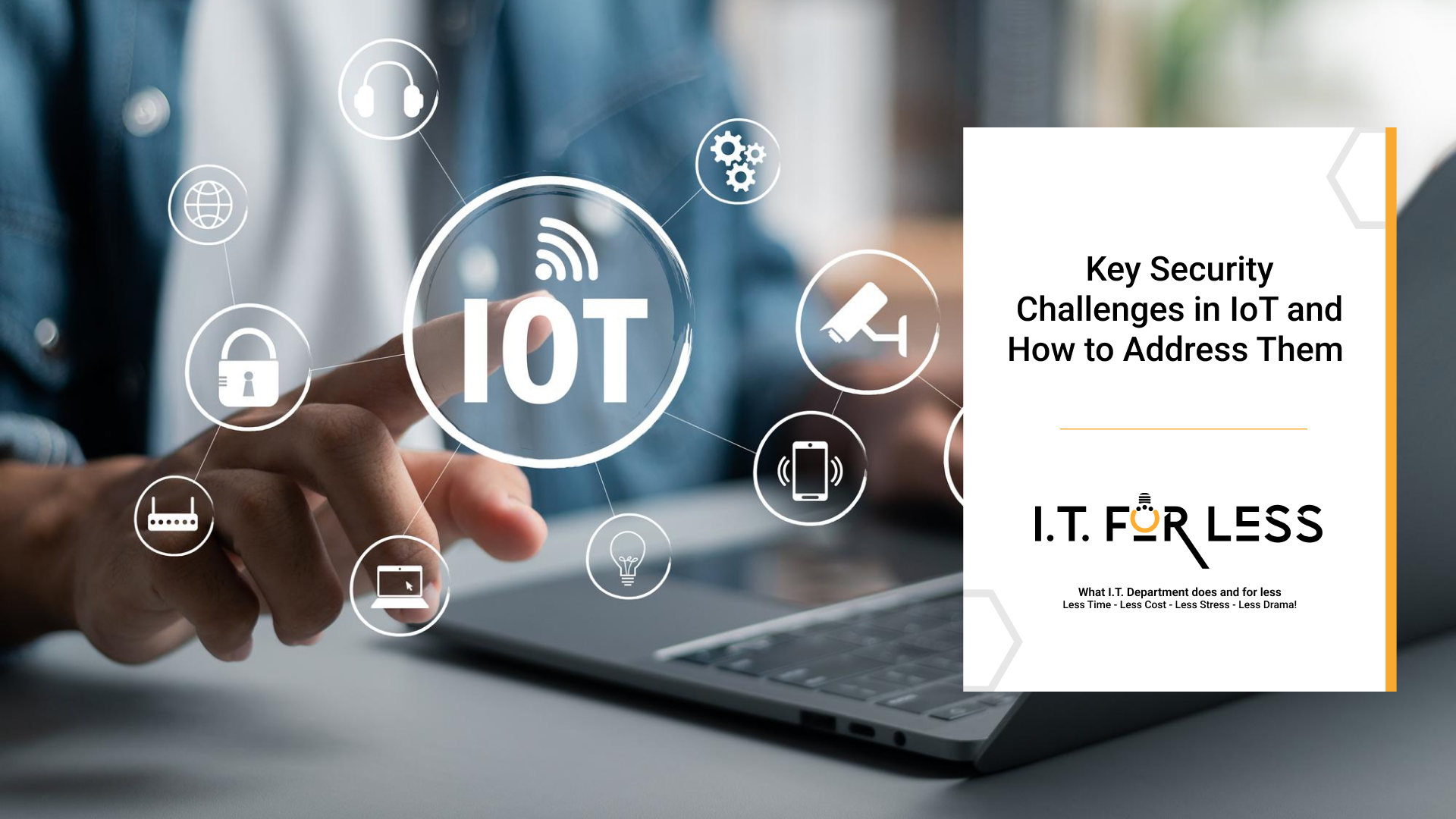The Internet of Things (IoT) is transforming industries by connecting devices, sensors, and systems — unlocking new efficiencies and real-time insights. However, understanding the key security challenges in IoT is crucial as the number of connected devices grows, increasing the risk. Each connected endpoint is a potential entry point for cyberattacks, making IoT security one of the most pressing challenges for organizations today.
Here’s a closer look at the key security challenges inherent in IoT — and how businesses can effectively address them.
1. Device Vulnerabilities and Weak Authentication
Many IoT devices are shipped with default or weak passwords, outdated firmware, and limited security features. Attackers exploit these weaknesses to gain unauthorized access, highlighting key security challenges in the IoT context.
How to address it:
- Enforce strong, unique credentials for every device.
- Implement multi-factor authentication where possible.
- Use firmware signing and secure boot to prevent tampering.
- Regularly update and patch devices through automated processes.
2. Lack of Standardized Security Protocols
With so many device manufacturers and communication standards, IoT ecosystems often lack uniform security practices. This fragmentation leads to inconsistent protection across networks, making it a significant part of the key IoT security challenges.
How to address it:
- Adopt industry-recognized frameworks like NIST IoT Cybersecurity Guidelines or ISO/IEC 27001.
- Choose vendors that comply with security certification programs.
- Standardize data encryption and access policies across all IoT layers.
3. Data Privacy and Compliance Risks
IoT devices collect sensitive data — from industrial equipment readings to personal health metrics. Without proper governance, this data can be exposed or misused, emphasizing key IoT security challenges in protecting privacy.
How to address it:
- Use end-to-end encryption for data in transit and at rest.
- Limit data collection to what’s strictly necessary.
- Implement role-based access controls and regular compliance audits.
- Stay aligned with GDPR, HIPAA, or local data privacy laws.
4. Network and Endpoint Exposure
IoT devices often communicate across public or shared networks, which makes them susceptible to man-in-the-middle attacks or network sniffing. This scenario highlights key security challenges inherent in IoT networks.
How to address it:
- Segment IoT networks from core business systems using virtual LANs (VLANs) or zero-trust architectures.
- Deploy intrusion detection and prevention systems (IDPS) tailored for IoT environments.
- Continuously monitor traffic for anomalies and unauthorized access.
5. Scalability and Lifecycle Management
As IoT deployments grow, keeping devices secure throughout their lifecycle — from deployment to decommissioning — becomes complex. This complexity amplifies key IoT security challenges in managing devices.
How to address it:
- Automate device onboarding, monitoring, and patch management.
- Maintain an up-to-date inventory of connected assets.
- Decommission and wipe devices securely before disposal or reuse.
Conclusion
IoT is the backbone of modern digital transformation — but without robust security, it can also be a gateway for risk. Addressing the key security challenges across the IoT landscape is essential. By addressing these challenges through strong authentication, network segmentation, encryption, and continuous monitoring, organizations can create a secure foundation for innovation.
Partner with I.T. For Less today and take the first step toward building an IoT security strategy that keeps your IT flowing as effortlessly as your ambition.
